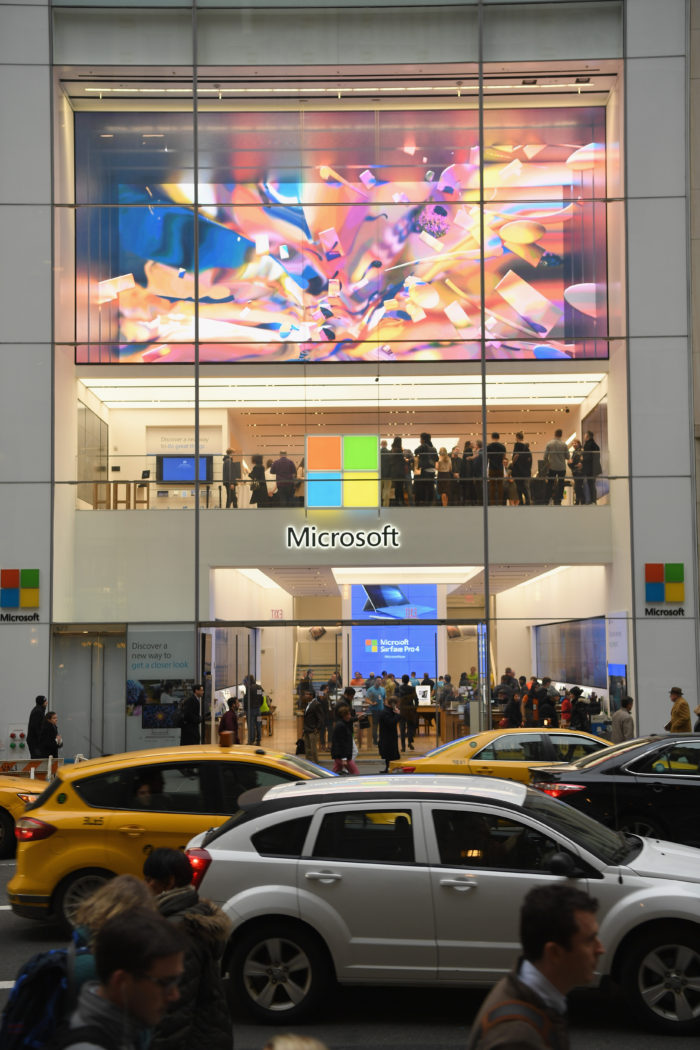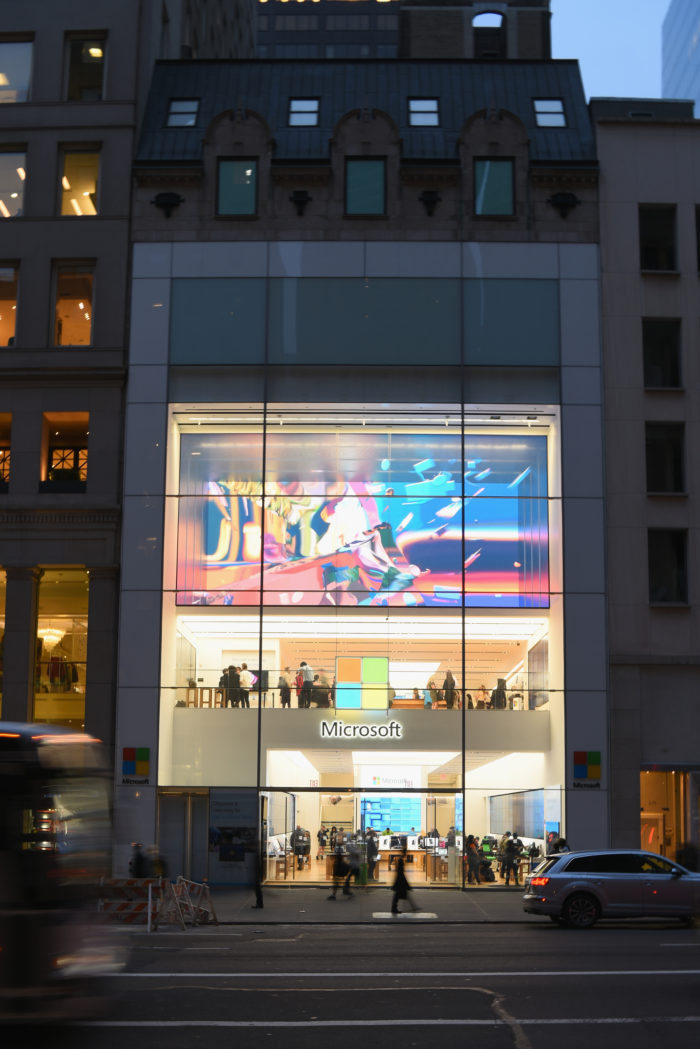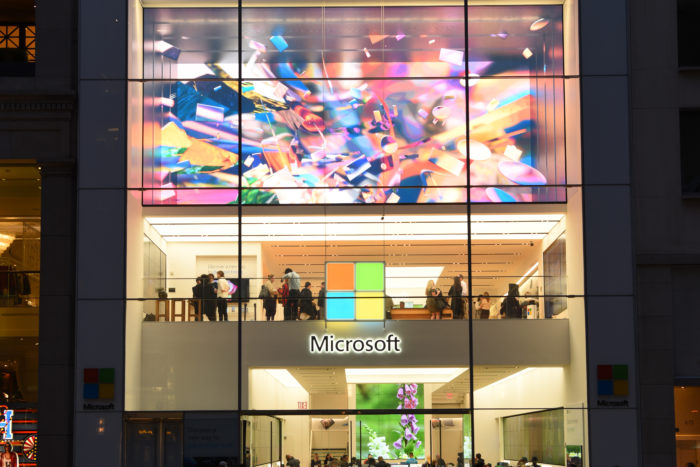
Passing by the Microsoft flagship store on 5th avenue, wanderers may notice a composition of swirling colors and shapes gliding inside the store’s gigantic screen on its façade. Entitled Sundial, the video occupying the crowded Midtown street with pixels of hues is the Brooklyn-based artist Tabor Robak’s latest digital art piece. The first outcome of Microsoft’s recently-initiated collaboration series with digital artists, the project no wonder starts with Robak, who is widely known for his digital installations that merge human gestures with growing extents of computer technology. “I have always said tools first,” notes Robak, “I am glad to be in this full circle with people who actually make the tools that I make art with.”

Tabor collected Adobe stock photos of landscapes from around the globe, orchestrating seven hundred of them on a grid based on their color temperature. Later, he inputs them into an algorithm that digitally manipulated and abstracted the image, creating digitally rendered color potpourris beaming with exuberant tones that are no different than painter’s gestures on canvas. The result is akin to Abstract Expressionist painting floating in moving image. Robak separated the end result into three videos screened according to the natural daylight at different times of the day so that imagery running on the 800 square-foot LED screen is complimented by the current daylight and how the eye sees color during the morning, afternoon, and evening.

Robak’s source material emanates from the most artificial and hyperbolic versions of our natural habitat. Canyons, lakes, mountain peaks, and seascapes are enhanced with digital technology in stock photos, allowing altered versions of these natural sceneries complicate the real image in our consciousness. Eventually, idealized, yet exaggerated landscapes which are equally familiar and otherworldly occupy our daily life and computer screen savers, substituting for a real sunset or a beach. Robak is known for his mastery of combining digital realm with natural and manual painterly gestures. The title of Kyle Chayka’s 2015 Vulture article read “Can Digital Artist Tabor Robak Become Pixelangelo?” and compared the artist’s use of CGI medium to Michelangelo’s treatment to marble. Here, he furthers this approach by removing representational aesthetics on the digital canvas and he instead focuses on abstraction and the essence of color. His source material, however, remains landscape, one of the most archaic sources of painting that Impressionists called en plein air. “Unlike my previous work where there were references to personified objects, this work is purely about the technique, the color, and the shape,” underlines Robak whose 2015 Team Gallery exhibition, entitled Fake Shrimp, had delved into a digital rendering of mundane objects and public media occupying our collective memory.
Our current association and divergence from nature builds its path for an alternative understanding of nature and art. Robak’s concept strives to build this connection and make these kitsch landscapes poetic and relevant in this rapidly changing digital world. Smears of blues, reds, and yellows do not stem from a paintbrush, but instead from subverted images of nature that those paintbrushes traditionally tend to illustrate. This reversed cycle of inspiration and utilization finds its setting on the 5th Avenue in New York, one of the most commercialized and publicized streets in the world. Stores of high-end fashion brands, Trump Tower, street sellers, and vagabond tourists march every day up and down the street while being exposed to countless billboard ads and signs. Robak’s Sundial appears like a mirage amidst such chaos of visual residue.
Writing by Osman Can Yerebakan
